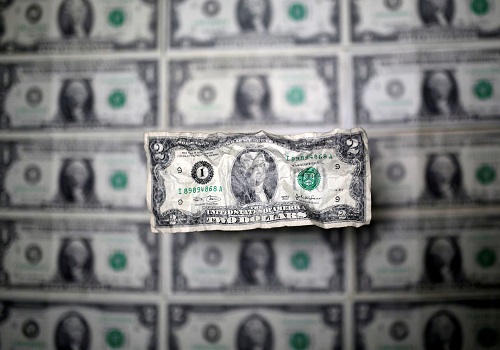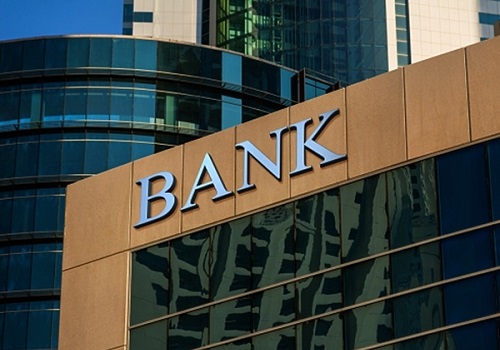Report on INDIAN BANKING SECTOR Rate Race: Entering The Next Phase Of The Banking Cycle by SBI Capital Markets

EXECUTIVE SUMMARY
Credit and deposit growth likely to unite after 5 fiscals with the liquidity pump aiding deposits
Credit growth exceeded deposit growth for four consecutive fiscals through FY25 — only the second such occurrence in the past 50 years. However, the gap is gradually narrowing and the two may converge in FY26. This shift would be supported by surplus liquidity, which has historically fuelled deposits more than credit. As we expect nominal GDP growth closer to 9% y/y, credit and deposit growth are expected to be around 10-12% y/y.
Industry growth likely to remain bounded as global uncertainty and fierce competition from alternate funding sources afflicts banks
Industry credit growth remained a weak spot in FY25, expanding at just ~8% y/y, weighed down by structural shifts in the economy. The outlook for FY26 appears equally subdued, with the NSO projecting a 26% y/y contraction in private capex. In FY25, specialised project financiers disbursed more than twice the net amount lent by banks in infrastructure credit — highlighting their growing dominance. Also, ~70% of incremental industry bank credit over the 12 months ending Dec’24 was directed toward working capital rather than new investments. Further, FY25 saw record corporate bond issuances, and this momentum may persist in FY26, particularly as the spread between MCLR and bond yields has widened to multi-year highs.
NBFCs look to diversify funding away from banks, impacting services growth… Personal loans to be saving grace on regulatory relaxations
• For the first time in several years, the share of bank loans in NBFC liabilities has declined, indicating increased funding diversification — particularly among highly rated NBFCs, which have benefited from access to lower-cost bond markets. In contrast, lower-rated NBFCs are likely to remain reliant on bank financing. Meanwhile, the RBI’s draft guidelines aimed at expanding the co-lending framework are expected to support credit flow to the MSME sector
• On a brighter note, personal loans are expected to be a key driver of credit growth, supported by the easing of regulatory restrictions on select unsecured segments. Further tailwinds may come from potential direct tax relief in the Union Budget, ample system liquidity, and a declining interest rate environment — all of which could stimulate retail borrowing
Deposit growth reverting to long-term mean as C/D scramble eases and competitive dynamics of rates is changing
In FY25, ~86% of incremental deposits came via term deposits, with wholesale term deposits accounting for 50% of total outstanding term deposits as of Dec’24. PVBs outperformed their peers, capturing a higher share of incremental CASA and term deposits relative to their share in outstanding deposits in FY25. They achieved while maintaining a WADTDR (o/s) lower than PSBs for more than 1.5 years, largely attributable to differences in the mix. Indeed, with interest rates trending lower, leading PVBs are now positioned to offer savings rates on par PSBs, marking a shift in competitive dynamics.
Banks would use borrowings opportunistically in FY26
Amid deposit pressures in FY25, many banks turned to alternative funding channels, issuing nearly Rs. 1 trn in infrastructure bonds and actively tapping the certificates of deposit (CD) market. CDs may retain a rate advantage in the near term, as bond markets typically price in policy rate cuts faster than deposit rates adjust. While easing short-term rates could reduce borrowing needs, NBFCs and mid-sized banks must remain vigilant on asset-liability management (ALM) to avoid repeating past missteps.
NIM squeeze to ensue as the first rate cut cycle in an EBLR dominated world promises interesting times
With the onset of the rate cut cycle, lending yields are expected to decline more swiftly than in past cycles, owing to the elevated share of EBLR loans — now comprising ~61% of floating rate credit, up from just 9% in Mar’20. However, nearly half of system-wide credit still remains tied to fixed-rate and MCLR-linked loans, which are likely to see minimal repricing in the near term. With only ~21% of term deposits maturing over the next year, deposit repricing will lag loan yields. As RBI cuts rates by another 50–75 bps and liquidity remains ample, a compression in NIMs appears inevitable in FY26, as transmission equalises across fresh loans and deposits.
Above views are of the author and not of the website kindly read disclaimer
























